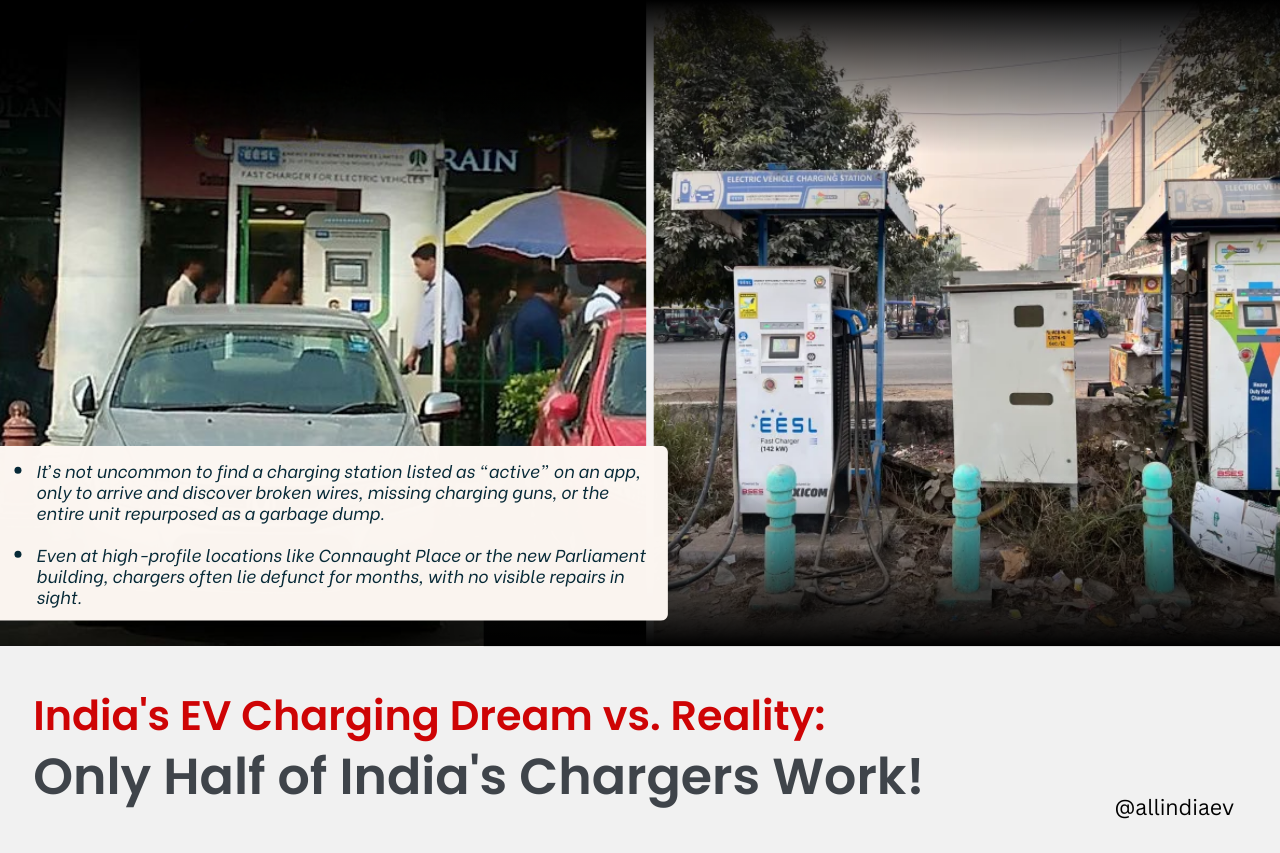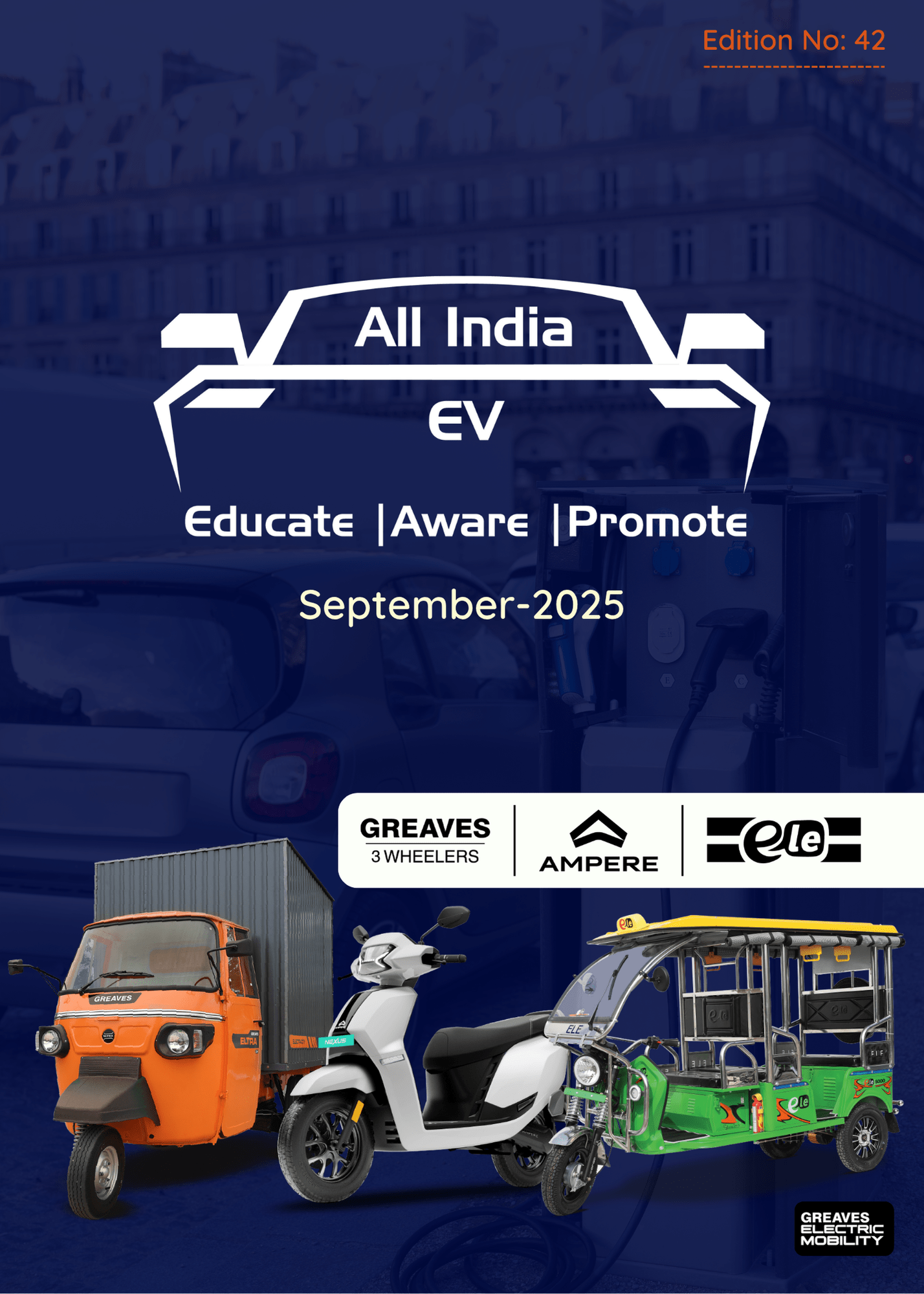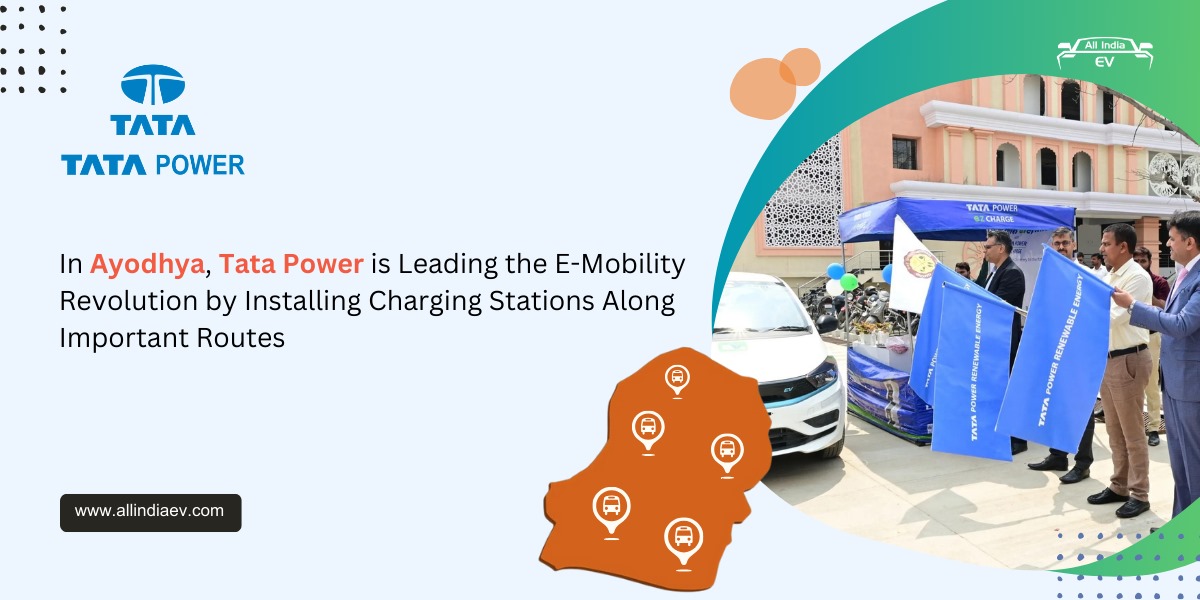
India’s EV charging dream faces a reality check as only half of the country’s chargers are functional, hindering electric vehicle adoption.
The Indian electric vehicle (EV) market has been generating immense excitement lately. From the much-anticipated Maruti Suzuki e-Vitara to the sleek Hyundai Creta EV and premium models like the Audi Q6 e-tron and MG Cyberster, the EV landscape is expanding rapidly. With new models offering impressive features—longer ranges, faster acceleration, and advanced technology—the idea of owning an EV is more attractive than ever. However, the reality of EV ownership is far from seamless due to the country’s underdeveloped and unreliable charging infrastructure.
✅Promises of Expansion
Both automakers and government entities are pushing forward ambitious plans to bolster India’s EV charging network. The government’s PM E-Drive Scheme and FAME II initiative have earmarked substantial funds for fast-charging stations, while major companies like Tata Power, Reliance, and BPCL are investing heavily in infrastructure expansion. With targets set for tens of thousands of charging stations by 2027, including a proposed 400,000 points, the future seemed bright. Urban centers are brimming with announcements about widespread coverage and luxury brands like Audi boasting impressive networks of 6,500 chargers.
On paper, these developments sound promising. But the truth is far from reassuring for the average EV buyer, particularly for those hoping to use their vehicle for more than just short city commutes.
✅ The Reality on the Ground: Patchy and Unreliable
A closer look at the situation reveals a different picture. Despite claims of thousands of charging points, finding a working charger in major cities can often be a frustrating experience. In Delhi, for instance, the city may boast over 18,000 charging points, but many of them are either out of order, damaged, or entirely repurposed for other uses. There have been multiple reports of charging stations listed as “active” on apps, only for users to discover broken equipment or a non-functioning unit upon arrival.
This issue is not isolated to Delhi. Across India, public charging stations suffer from poor maintenance, frequent outages, and missing equipment. In fact, studies from early 2024 suggest that only half of the 25,000 installed chargers across the country are actually operational. These technical shortcomings, combined with a lack of reliable power supply, have become major deterrents for prospective EV owners.
✅ The Fast Charging Dilemma
For those who envision using their EV for long-distance travel, the situation is even more discouraging. True fast chargers (those capable of delivering 100kW or more) are extremely limited, especially outside urban areas. While metro cities may have a few fast-charging options, most chargers are slow (15–30kW), meaning that a full charge could take several hours. Fast chargers are typically confined to urban pockets or luxury dealerships, where even their reliability is often questionable.
Highways, which are key for long trips, offer a particularly challenging scenario. Although some highway stations operated by Shell and Jio-BP show promise, they remain the exception rather than the rule. Many highway charging stations are either non-functional, slow, or simply non-existent, making long-distance EV travel an anxiety-inducing experience for drivers.
✅ Range Anxiety: A Major Concern
Given the unreliable charging infrastructure, range anxiety remains a significant concern for potential EV buyers. Surveys indicate that more than half of Indian consumers are reluctant to switch to electric vehicles, fearing they will run out of charge, especially during long trips. As a result, most current EV owners rely heavily on home charging—90% in some cases—while those without access to a home charger or parking spot face significant challenges.
Despite government incentives and new vehicle launches, EV adoption is sluggish, particularly among those who need their cars for more than just short-distance urban commuting. The lack of a robust and dependable charging network remains a major barrier to widespread EV adoption.
✅ The Road Ahead: Promises vs. Reality
While India’s EV revolution is well underway, the country’s charging infrastructure is struggling to keep pace. Until the network becomes truly reliable, fast, and widely accessible, the excitement surrounding new EV models will remain just that—excitement. The dream of a seamless, worry-free electric mobility future is still distant, with the current infrastructure unable to support the kind of long-distance travel that drivers expect from traditional vehicles.
For prospective EV buyers, the reality is clear: despite the glitzy marketing and ambitious announcements, the charging network remains a significant roadblock. Until this issue is addressed, the promise of effortless EV ownership will remain out of reach for many.










